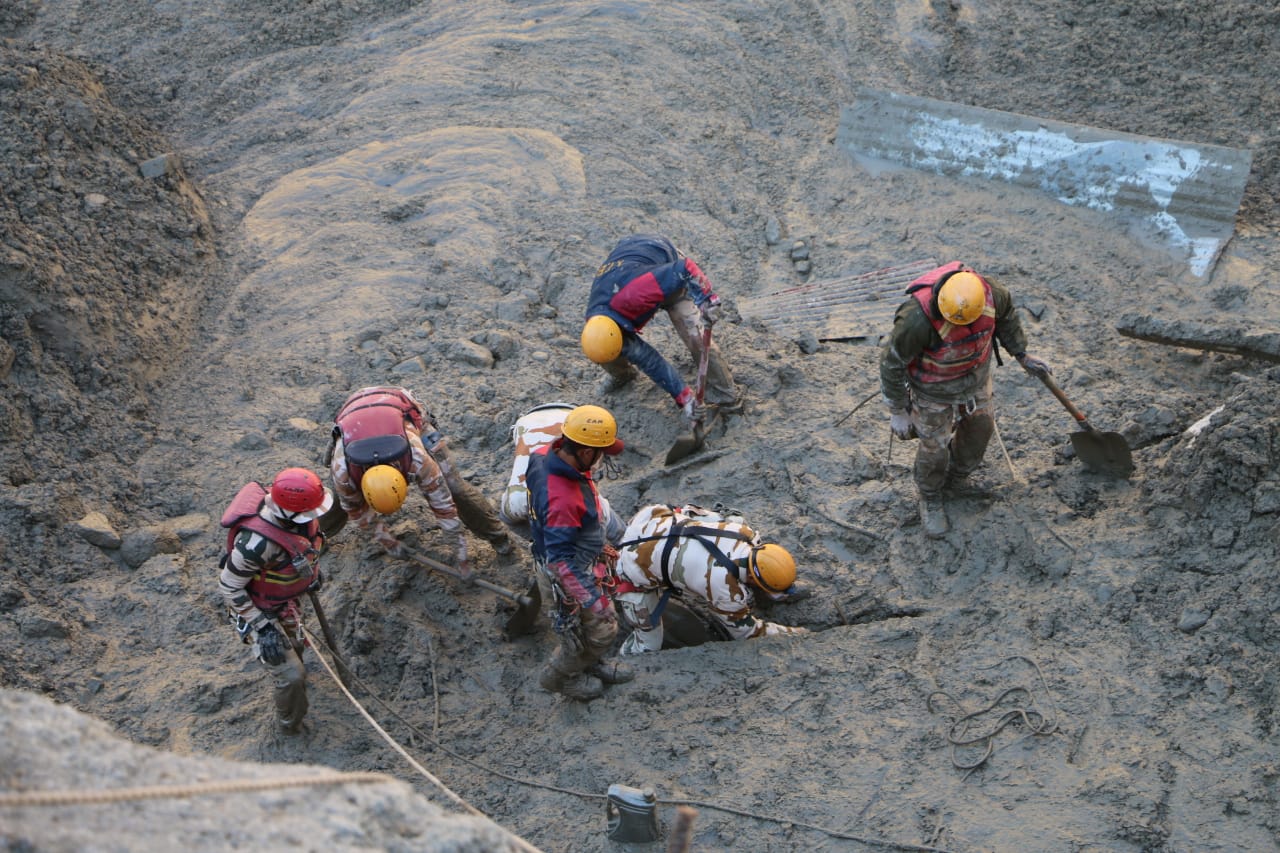
Rescue teams make headway in Tapovan rescue effort; 30 still trapped
Rescue teams are finally making headway in drilling a hole to reach the 30 odd people still trapped in the slush-filled Tapovan hydel project tunnel in Uttarakhand’s Chamoli. The marathon rescue operation has continued unabated on the seventh day of the Nanda Devi glacier burst disaster to try and save as many people as possible.

Rescue teams are finally making headway in drilling a hole to reach the 30-odd people still trapped in the slush-filled Tapovan hydel project tunnel in Uttarakhand’s Chamoli.
The marathon rescue operation continued unabated on the seventh day of the Nanda Devi glacier burst disaster to try and save as many people as possible. National Thermal Power Corporation (NTPC) officials said that the teams are currently trying to widen the hole to be able to insert a camera into the tunnel to get an idea of the location of the trapped men, PTI reported.
“Drilling of a 12-metre-long hole of 75 mm diameter in the intake adit tunnel to its inside has been successful,” the General Manager, R P Ahirwal, NTPC, Tapovan said in a release. “This is a good sign as there is no water or slush pressure observed in the silt-flushing tunnel,” he added.
However, he pointed out that the camera could not be inserted due to the presence of slush. Therefore, they were planning to drill a larger diameter hole of 250-300mm. Meanwhile, mucking from the intake audit tunnel is in progress, he said.
Also read: Uttarakhand glacier burst: 3 bodies found, over 150 missing
As many as 25-35 people are believed to be still trapped inside the Tapovan tunnel. Disaster struck on February 7, when a major portion of the Nanda Devi glacier broke off resulting in an avalanche and deluge in the Tapovan-Reni area of Chamoli district of Uttarakhand. Dhauli Ganga, Rishi Ganga and Alaknanda rivers — all intricately linked tributaries of the Ganga — started to flood triggering widespread panic and large-scale devastation in the high mountain areas. Two power projects — NTPC’s Tapovan-Vishnugad hydel project and the Rishi Ganga Hydel Project — were extensively damaged with scores of labourers trapped in tunnels as the waters came rushing in.
Nearly 38 bodies have been recovered so far from the affected areas, and 166 people are still missing. 12 bodies were identified and 26 remain unidentified, said Chamoli District Magistrate Swati Bhadoriya on Saturday.
“Our teams are continuously searching for bodies. A team has also been deployed to search for bodies along the river. All agencies involved in rescue operation are working round the clock,” said PK Tiwary NDRF Commandant, at the Tapovan tunnel in Chamoli district to reporters.
Joint teams of State Disaster Response Force (SDRF), National Disaster Response Force (NDRF), Indo-Tibetan Border Police (ITBP) and other teams are carrying out the operation. The Indian army is using trolleys to connect villages in Chamoli, who have been cut off by the disaster. A footbridge was broken due to the flash floods leaving people in villages disconnected. We’ve built aerial river crossing to provide connectivity, said Major Utkarsh Shukla.
Also read: Uttarakhand disaster: Big infra projects threaten fragile Himalayan region
Earlier on Friday, officials noticed the formation of a lake near Raini village in Joshimath, which caused concern. However, the Uttarakhand Chief Minister Trivendra Singh Rawat on Friday had told mediapersons that the lake was being monitored through satellites and there was nothing to worry about. But, scientists of the Indian Institute of Remote Sensing doing an aerial survey of Rishiganga found that the glacial lake formed due to the avalanche over it had begun to release water, which reduces chances of its breaching or causing a flash flood.

